Introduction
💡 This was originally a talk that I gave on 31 October 2024 at the inaugural Siligong Gamedev meetup in Wollongong, Australia.
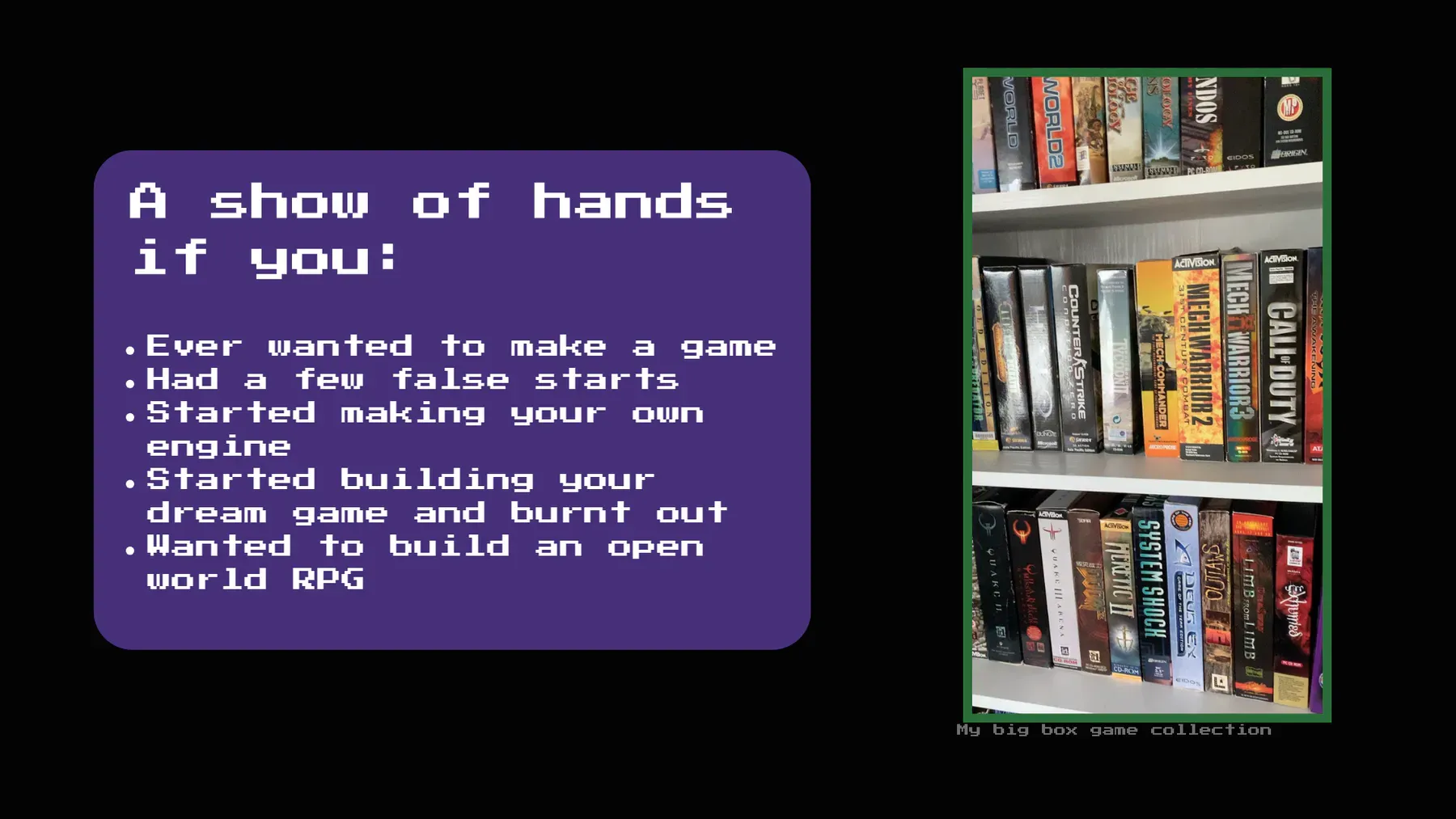
For as long as I can remember I have wanted to make games. Well, I always told myself and others that I’ve always wanted to make games. However, until 2020-21 when COVID hit, game development was just a dream. Perhaps it was COVID that triggered it, but I decided that it was time for me to stop talking about it and go ahead and do it.
Prior to 2020, I had several false starts at making a game. I tried to make my own engine. I tried to learn OpenGL from scratch. None of that ever stuck. It would get hard and I would move onto something else.
Why should you listen to me?
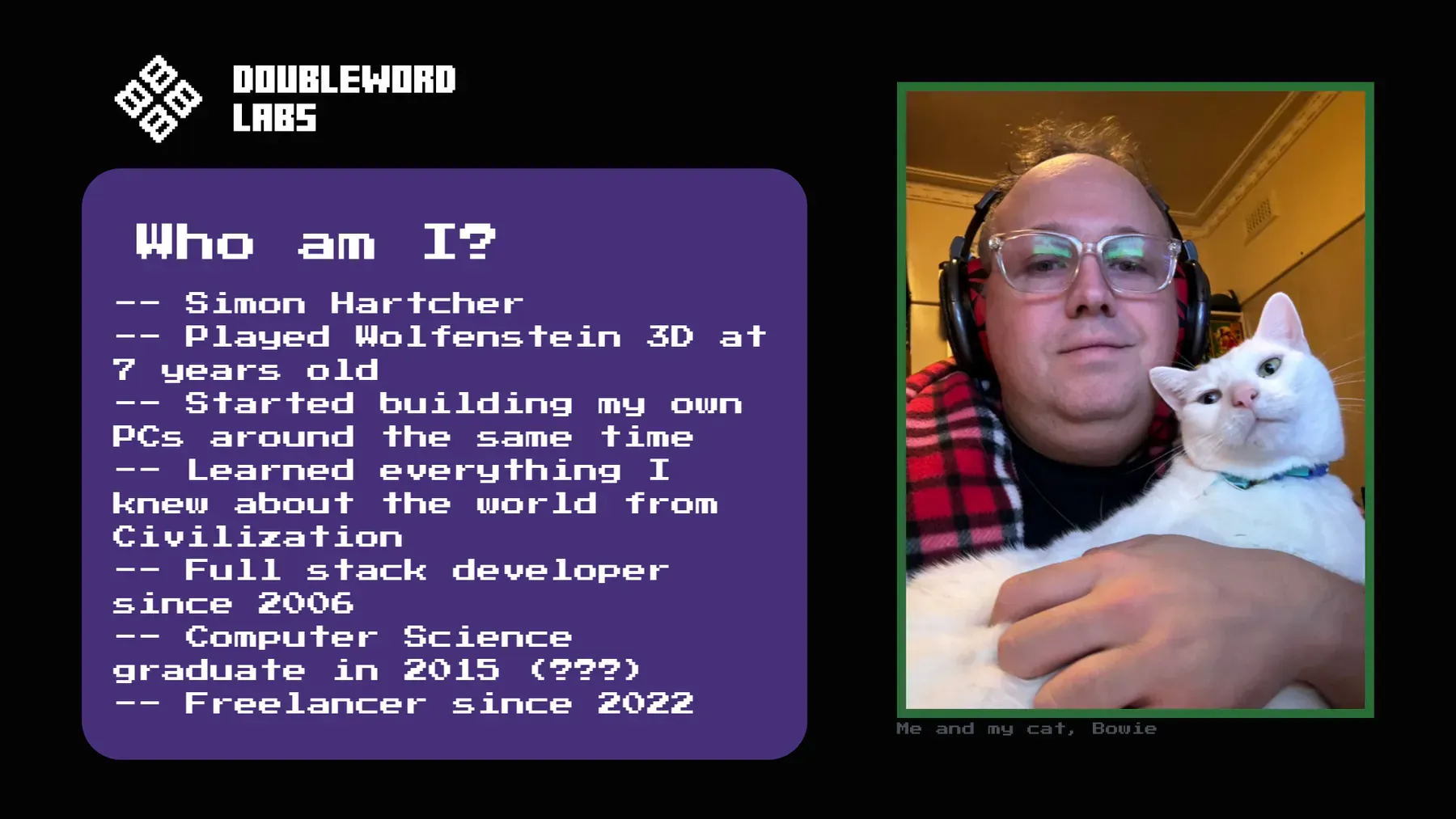
I’ve been a “hardcore PC gamer” since I was 7 years old. I’ve played a lot of FPS games. From the seminal titles such as Wolfenstein 3D, DooM and Duke Nukem 3D, to sweaty competitive titles such as Counter Strike, Call of Duty and Team Fortress.
I also love strategy games. I began with Sid Meier’s Civilization, Dune 2 and Warcraft. More recently I have been playing titles such as Into The Breach and Civilization 6, and Balatro.
Professionally I have been working as a full stack developer since 2006. I got my computer science degree in the middle. Up until that point, I was completely self taught. Though I will say that I was always obsessed with trying to be better and better every day.
How I started my game development journey
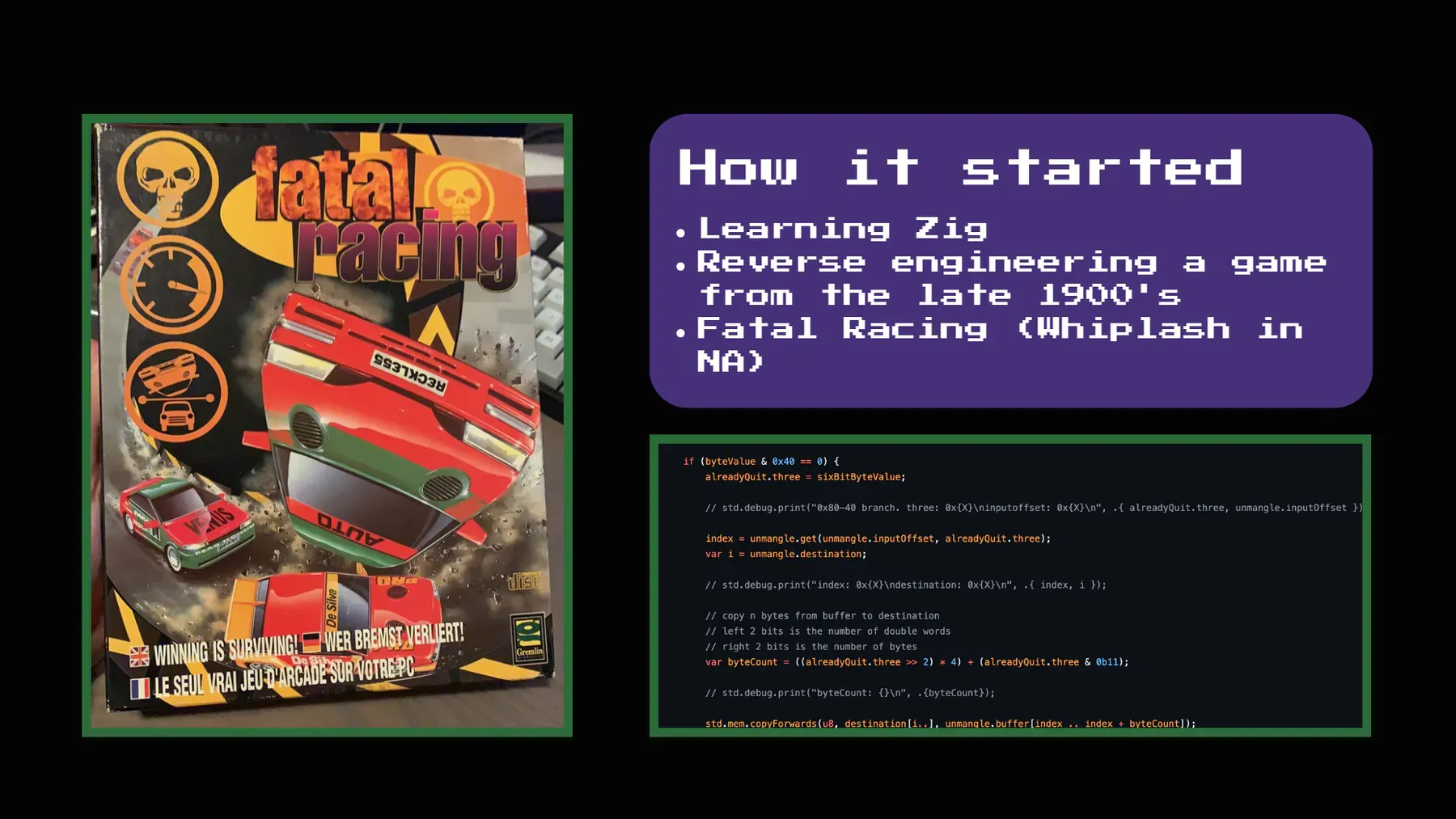
I have always liked C. When I was doing my CS degree, if I was able to choose what language to use for projects, I would choose C. My tutors didn’t like that. There is something satisfying for me working at such a low level of abstraction. All the footguns are there, but so are all the possibilities!
I can’t remember exactly when I found Zig, but when I did I absolutely fell in love with it. It felt like writing C, but without some of the footguns of C. However in my day job, I was writing ASP.NET, or JavaScript or TypeScript and/or React. Zig wasn’t going to fly on any of these projects, so I needed a personal project to play around with and learn Zig.
Fatal Racing (or Whiplash in North America) is one of (if not my favourite) racing games from the 90’s. It’s basically Trackmania, but many years earlier. No one really talks about it, but there are dozens of us that remember it fondly.
I can’t really remember why, but I started reverse engineering Fatal Racing using Ghidra and implementing my findings in Zig. Through a series of events I was able to get a debug version of the game running which was instrumental in understanding the esoteric routines that Gremlin Interactive used to compress and obfuscate the data files.
My favourite memory from that time was successfully decompressing the game’s MIDI files and playing them back on my machine, which may have been the first time that had been done outside the game since 1996.
Enter, Godot Engine.
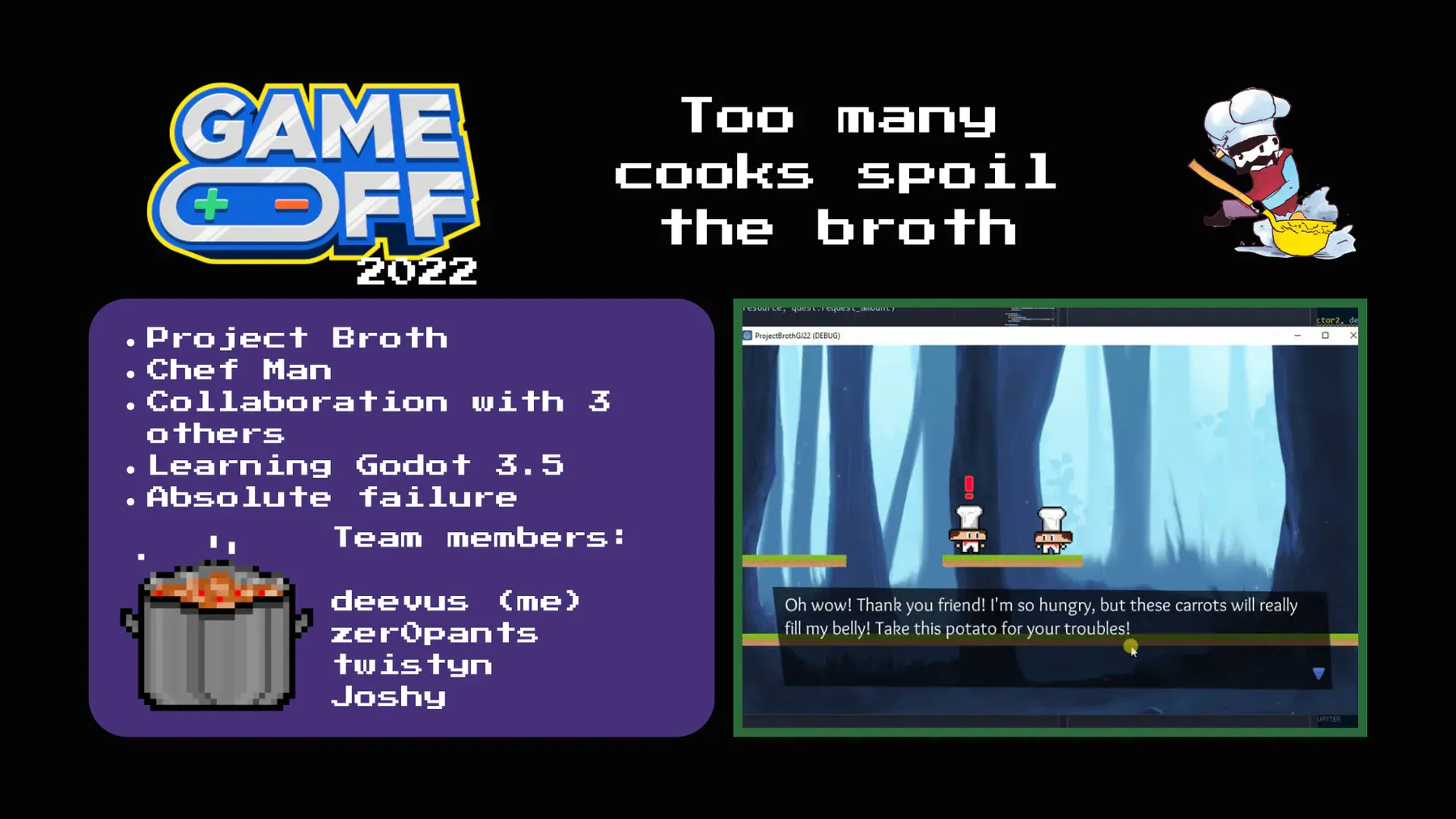
Myself and some friends from university had been talking about making games for years. I discovered that GitHub were hosting “Game Off 2022” and so I corralled my friends to join me in trying to submit our own game. The theme was something to do with cliches, and we landed on “Too many cooks spoil the broth”.
Ultimately, trying to learn a new game engine and make our first game in a month proved too overwhelming. We weren’t able to complete the game, because we had no idea what we were doing! So in the end, we didn’t submit anything. But I learned so much in that time! Having worked as a software engineer for years definitely helped, but there were so many additional things that I needed to learn to deliver a game.
Godot Wild Jam
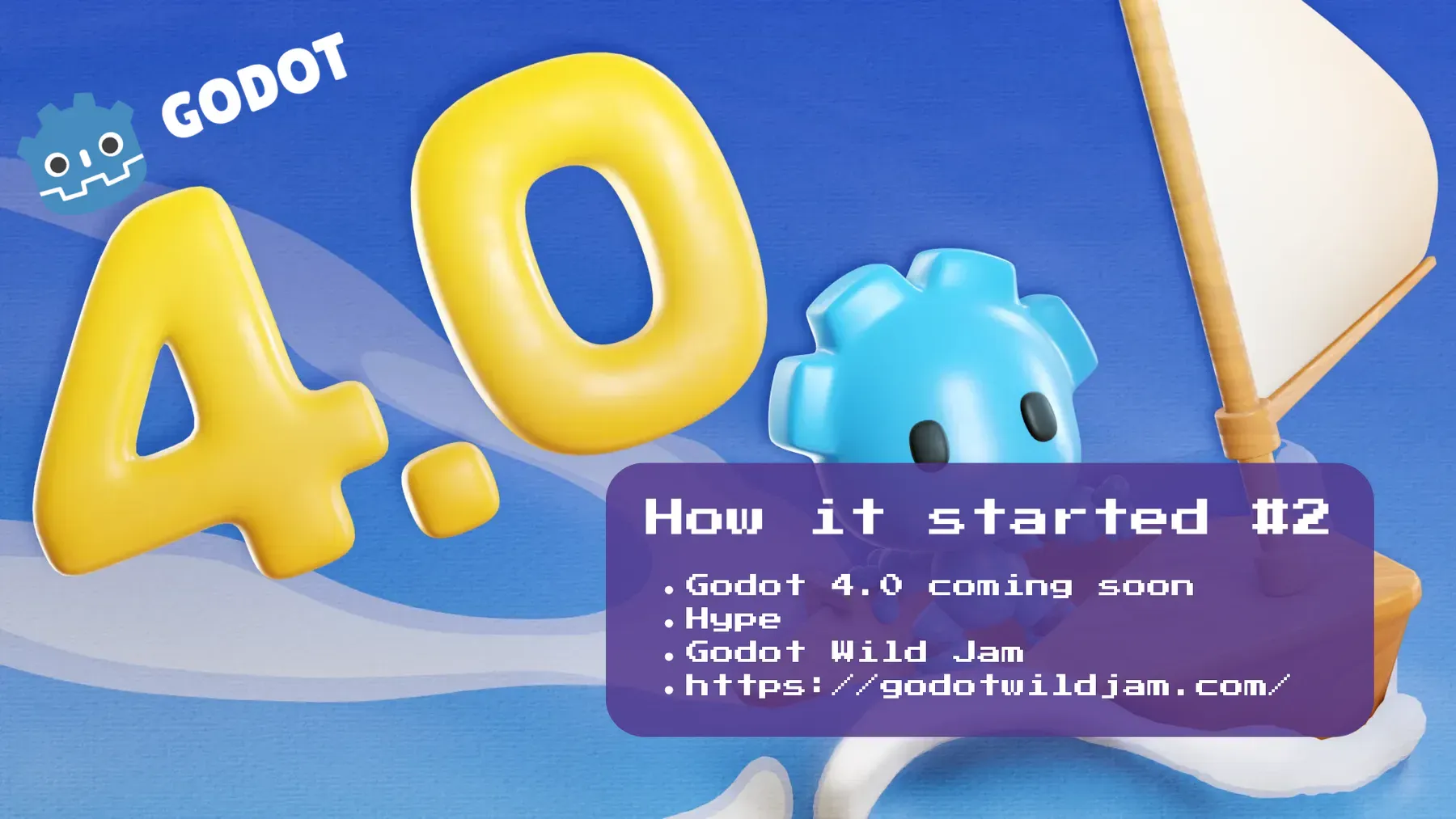
After Godot 4.0 was released, I discovered Godot Wild Jam. There was so much hype around this release of Godot Engine, and to be honest looking back now, no one had any idea how well Godot Engine 4.x would do. It has really shaken up the industry, especially for indie projects.
And what followed for me was submissions for 3 consecutive Godot Wild Jams.
Submission 1: The Dark Below
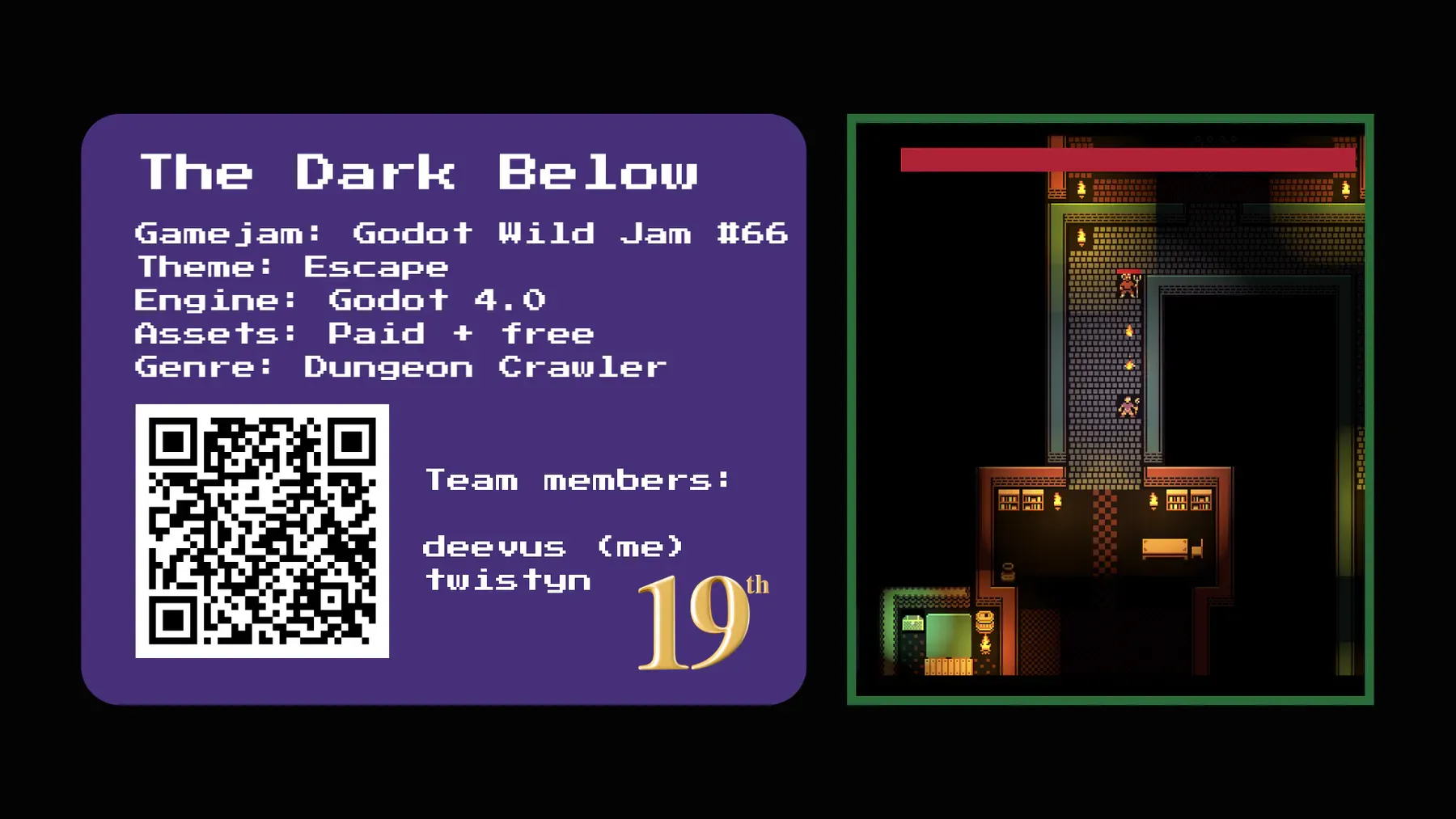
The Dark Below is still my best performing game jam submission to date. It is a top-down dungeon crawler where you play as a fireball throwing mage. It was just myself and my friend Tristan working on this one. We only completed one level but we were happy with the features that we were able to pack in, such as pickups, enemy AI, dynamic lighting and basic animations.
You can play The Dark Below on itch.io.
Submission 2: Parasite Attack 1984

Making Parasite Attack 1984 was my first solo game jam. Since I have no artistic skills, I decided to use only polygonal graphics (using the Polygon2D node in Godot) for the player’s artillery, projectiles, enemies and pickups. The gimmick of PA84 is that the way that you control the artillery is by typing in the grid location that you want to fire at. The artillery shell will explode when it reaches that location, destroying any enemies close enough to be enveloped by the blast radius.
You can play Parasite Attack 1984 on itch.io.
Submission 3: Fe-26: Furnace of Fury
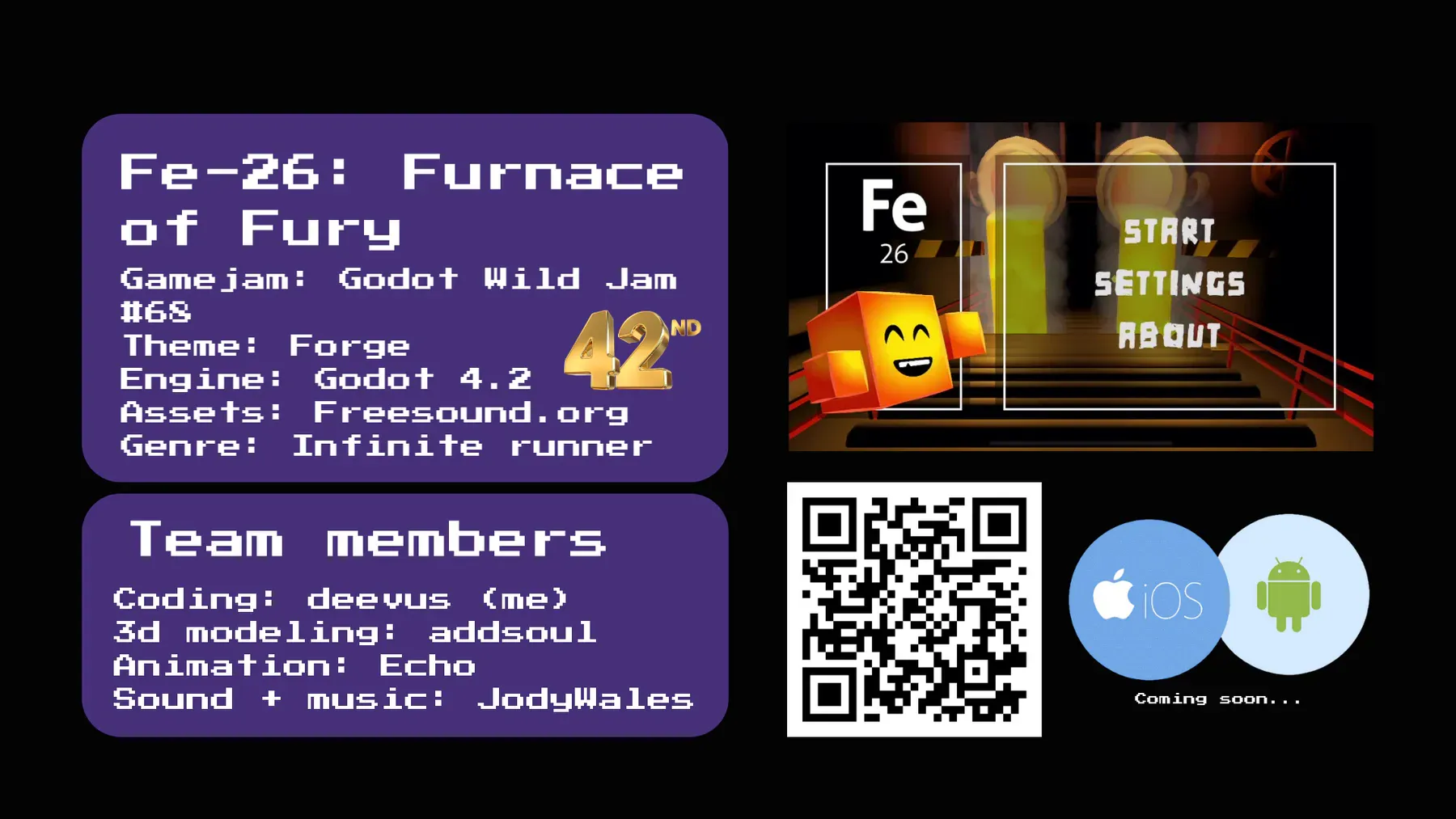
For my first 3D game, I worked with a team of people that I had never worked with before. Furnace of Fury is an endless runner where you play as a molten cube named Fe-26 (or Felix) trying to escape a factory and avoid being forged or melted down. As my first endless runner, it was an interesting problem to try and solve. The player doesn’t actually move forward, only left, right and a jump animation. The conveyors move towards the player, giving the illusion that the player is traversing the world.
AddSoul and I are actually working on bringing Furnace of Fury to iOS and Android using a freemium model.
You can play Fe-26: Furnace of Fury on itch.io.
Parasite Attack, again?
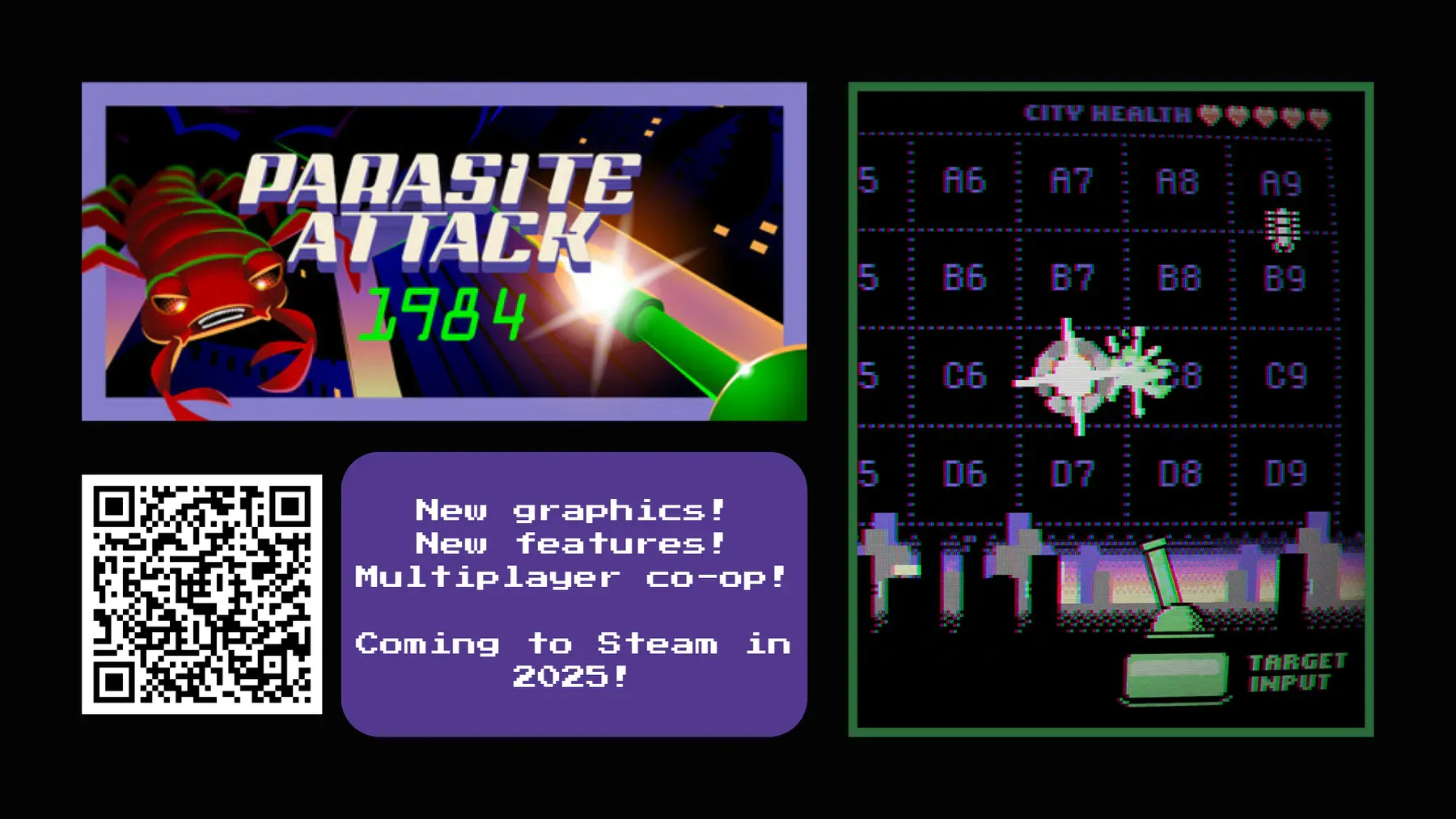
After having worked with addSoul on Furnace of Fury, they offered to work with me to give Parasite Attack 1984 a graphical overhaul. And with this overhaul and some new features, I felt that PA84 could be my first commercial release on Steam. I’ll tell you this for free: there is a lot of work required to get a game on Steam! I was quite surprised. But having gone through most of that process now, I think any future games that I want to release on Steam will be much easier.
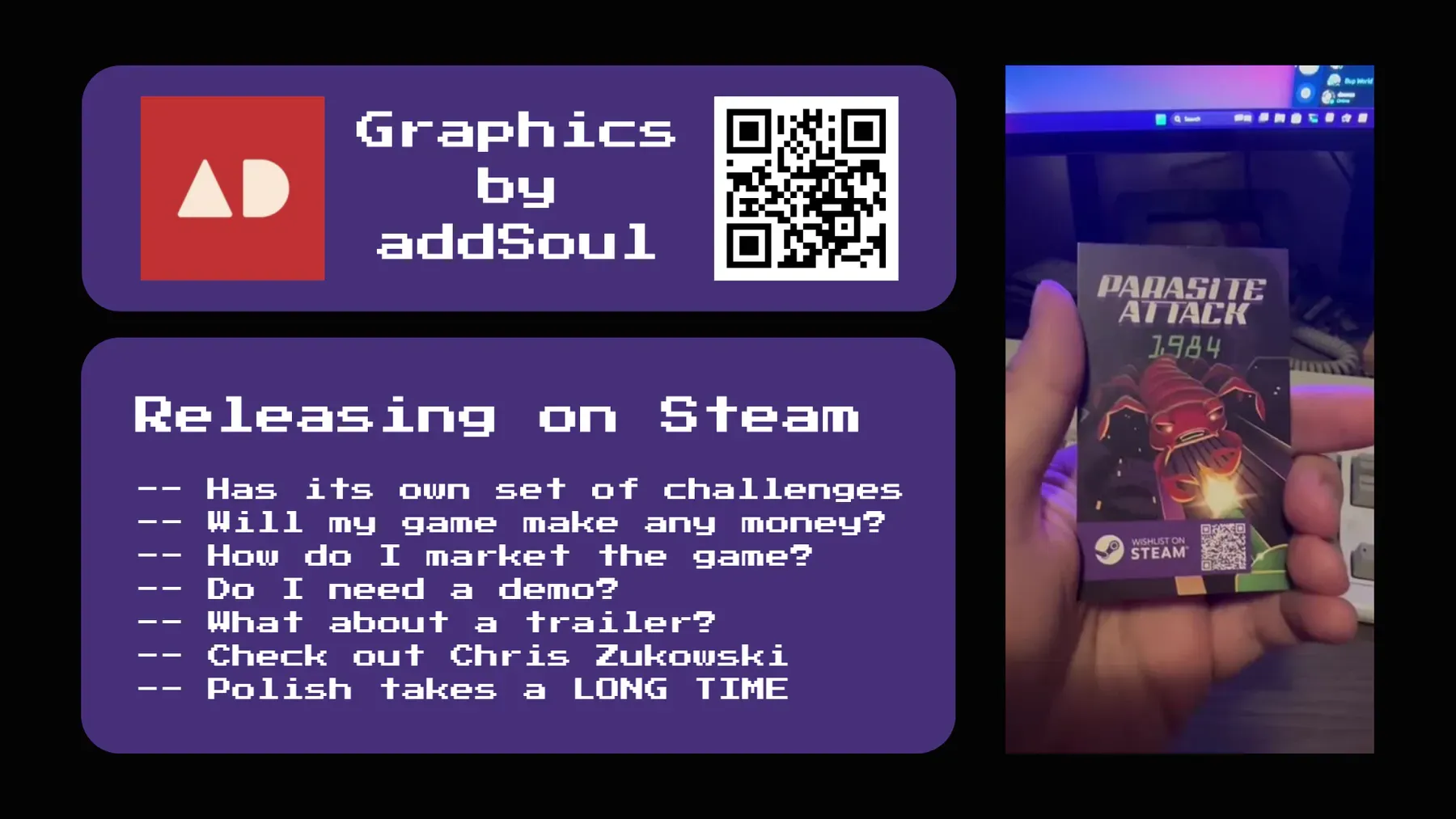
I have come to terms with the fact that I need to be realistic with my expectations of how well Parasite Attack 1984 will do. Marketing is one thing that I have really neglected, but lucky for me there is still time.
I have learned a lot by watching and reading content by Chris Zukowski from howtomarketagame.com. It blows me away that Chris gives so much information away for free. If you’re looking at releasing a game on Steam, I implore you to check him out.
My current plan is to create a demo, enter a few Steam festivals to garner some more wishlists, eventually culminating with Steam Next Fest and a release. Let’s see how that pans out.
Wishlist Parasite Attack 1984 on Steam!
Conclusion

Thanks to everyone who attended the Siligong Gamedev meetup, and to all of you that have taken the time to read this post.

Loading comments...